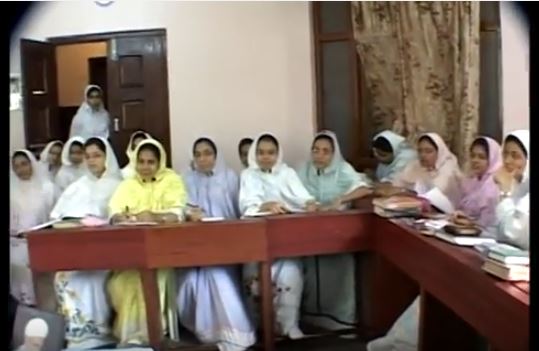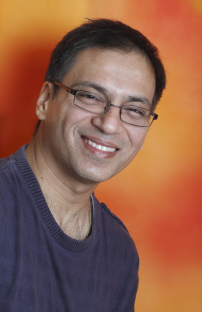Sign up for our newsletter
GET INVOLVED
CONNECT WITH US
Phone number: +1 508-263-0112
MAILING ADDRESS: 45 Prospect Street, Cambridge, MA, 02139
© 2025 Sahiyo. All rights reserved | Terms & Conditions and Privacy Policy
On January 20th, the Modern Abolitionist Global Campaign will start a two day campaign, with a kick -off event that will be a screening of movies dealing with gender violence and discrimination against women.
The following day, on January 21st, the Modern Abolitionist Global Campaign will hold the Frankfurt Women’s March on Washington.
Sahiyo will support the kick-off event, in which there will be a screening of A Pinch of Skin, a documentary produced by Sahiyo’s co-founder Priya Goswami, on the topic of female genital cutting in the Dawoodi Bohra community.
During the event, Sahiyo co-founders will be be joining via Skype for a Q&A session with audience members. The documentary, Girl Rising, about the importance of educating girls to break the cycle of poverty will also be screened. To learn more, contact the organizers here.
By Alisha Bhagat
Country: United States & India
I made Deen and Duniya in 2004 before my senior year in college. I received a Vira Heinz grant for women in leadership and thought it would be interesting to turn an anthropological lens on my own community – the Dawoodi Bohras. I am particularly interested in the role of women in the Bohra community and wanted to better understand certain dilemmas I saw while growing up in the community. When I sat down with people one-on-one while making this documentary, I found I was able to connect with them more and find out their logic for observing certain practices – be that science or faith.
The film is intended for a wide audience both inside and outside the community. For non-Bohras I wanted to show the positive things about our community and the everyday joy that we experience in things like sports, prayer, communal meals and family. I also wanted to highlight some of the issues that all women in patriarchal societies face – control over women’s sexuality, bodily autonomy, and the dual burden of work and running a household. I did not set out to make a film about FGM but I knew from the beginning that it should be included.
(To watch the video click here.)
It is both a wonderful and frustrating time to be a Bohra woman. As the film highlights, we are given so many opportunities for achieving educational and career goals. We are quick to adopt new technology and want to live in the modern world. At the same time, we are often required to shoulder a greater burden than men. We have to work hard in our careers and also cook and clean and raise children. We have a lengthy Iddat (mourning) period that men don’t have, and are silenced from talking about the things happening to our bodies. I recall knowing from an early age that my father and brother were circumcised but it was only after I went to college that my mom revealed to me that she had been also. I found it so interesting that a practice so widespread was so taboo.

Storytelling can be a powerful tool in creating social change. For example, a group of researchers in Sudan found that entertaining films can change attitudes and reduce gender bias. For those within the community, the purpose of the film is to start a conversation about why we observe certain practices. I’m proud that it can continue to do that. For years my parents used to show the film to every bohra guest that came over to our house (and I can assure you, that’s a lot). In the film we intentionally ask open-ended questions and the views of the interviewees are their own. Often after seeing the film, folks would share their own stories. My hope is that the film inspires you to do the same.
The segment on FGM begins at the 19 min mark. However, it is recommended that the film be viewed in its entirety to understand the practice within its cultural context.
Bio:
Alisha Bhagat is passionate about sustainable development. She is a futurist, feminist, and avid gamer. She lives in New York with her husband, beloved daughter, and adorable kitty.
In December 2015, Speak Out on FGM – a collective of Bohra khatna survivors – launched a signature petition on Change.org, appealing to various ministers in the Indian government to end Female Genital Cutting (khatna) in India. It was the first time that 17 Bohra women had publicly come out, as signatories, to speak against the practice, and the petition helped break the silence on Khatna both in the community and the media. Today, the petition has amassed more than 83,000 supporters.
A year since this pioneering petition, on December 10, 2016, Speak Out on FGM launched a new petition on Change.org, this time addressed to the United Nations. The petition was launched on Human Rights Day – the last day of the global 16 Days of Activism campaign to end gender-based violence, and it has already received 544 supporters.
The new petition reflects the growing, open support for the cause of ending khatna: this time, 32 Bohra women listed their names as signatories to the petition.
This petition is an appeal by survivors of khatna, calling upon the United Nations to strengthen its recognition of India as one of the countries where FGC is practiced.
While UN agencies do acknowledge that FGC is prevalent in “certain ethnic groups in Asian countries…in India, Indonesia, Malaysia, Pakistan and Sri Lanka”, Indonesia is the only one of these countries that is included in the UN’s official FGC-prevalence statistic of 200 million girls cut in 30 countries. Girls cut in India are thus excluded from these statistics of global prevalence (learn more here).
More global recognition of FGC would help spread awareness on the issue of khatna in India. More significantly, it would help Bohra women and men make official appeal to the Indian government to take policy-level steps to end FGC.
Currently, there is no law against FGC in India, and the matter is still barely recognised as prevalent in the Indian Bohra community. Since the religious and administrative headquarters of the Bohras are located in Mumbai, and since India houses approximately half the international Bohra population of 1.5 to 2 million, ending khatna in India can go a long way in ending the practice among all Bohras.
Through this petition, Speak Out on FGM hopes to speed up the process of instituting government and international mechanisms to highlight and promote measures to eradicate FGC.
To sign the petition, click here.
by Ashraf Engineer
Age: 41
Country: India
Picture this if you can without your heart racing and eyes welling up. A girl, let’s say she’s seven years old, is dressed up by her mother and told she’s being taken for a walk and an ice cream. She clings to her mother’s arm in glee and follows her, secure and happy. She is led to a house in the neighborhood where her mother undresses her and holds her down. A strange woman removes a razor blade and in a single, heart-stopping motion cuts the child’s clitoral hood.
The pain will ebb, the flowing blood will stanch but the scars will remain for life. A child has been damaged and her trust broken.
 I hail from the Dawoodi Bohra community where female genital cutting (FGC) is prevalent but the thought ofsubjecting my little girl to it never once entered my mind. She is the joy of my life, she gives it meaning. There was no wayI could do that to her. Among the many ugly manifestations of patriarchy, I believe FGC is perhaps the most horrific. We see everywhere how society feels the need to control every aspect of a woman's life - from whether she can live aftershe is born and whether she can get an education to whom she can marry and when. This attitude often extends to controlling her sexuality – through FGC.
I hail from the Dawoodi Bohra community where female genital cutting (FGC) is prevalent but the thought ofsubjecting my little girl to it never once entered my mind. She is the joy of my life, she gives it meaning. There was no wayI could do that to her. Among the many ugly manifestations of patriarchy, I believe FGC is perhaps the most horrific. We see everywhere how society feels the need to control every aspect of a woman's life - from whether she can live aftershe is born and whether she can get an education to whom she can marry and when. This attitude often extends to controlling her sexuality – through FGC.
FGC is one of the most serious human rights issues before us today. It is an ongoing practice rarely talked about even by those who have undergone it, and it is not part of the public consciousness. Like marital rape and abuse, it exists around us but is rarely thought about.
According to UNICEF data, there are at least 200 million girls and women across 30 countries who have been cut. If they were to form a country, it would be the sixth most populous in the world. We are looking at an alarming crime against humanity that needs our urgent attention.
FGC is illegal in many countries – a United Nations resolution against it was signed by 194 countries in 2012 – but its abandonment will require more than a law.
Since the root of the problem is patriarchy, a social system in which males are all-powerful and wield great authority over women, men must become an integral part of the solution. FGC is perpetrated on women, but I believe it’s done to satisfy the male craving for control of female sexuality. Indeed, societies in which FGC is practiced tend to be dominated by men.
It’s time for men to speak out against this harmful practice. It’s their duty, and their collective voice will matter. If they wish to, they can make a difference. Men need to stand up and be counted – primarily as fathers of girls in danger.
This will help men too. Secure, happier women are necessary for stronger, fulfilling relationships and a progressive society.
Here are a few steps that can be taken immediately by individuals and governments:
As the father of a young girl, even the thought of FGC creates a hollow feeling in the pit of my stomach. That such cruelty can be wreaked on anyone, let alone a child that has no clue of what is happening to her, breaks my heart.
As a father, your primary instinct is to protect your daughter and help her grow. You can’t do that by mutilating her body and shattering her trust.
(Ashraf Engineer, a former journalist, is a communication and marketing consultant. He recently released his first book, a Kindle-only release titled Bricks of Blood.)
(Note from Sahiyo: As an individual, another immediate step you can take to help bring an end to FGC is to sign this petition by Sahiyo and 31 international organizations. Click here.)
Phone number: +1 508-263-0112
MAILING ADDRESS: 45 Prospect Street, Cambridge, MA, 02139
© 2025 Sahiyo. All rights reserved | Terms & Conditions and Privacy Policy